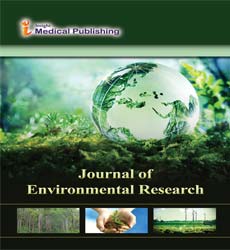Pathogenic Escherichia coli strains recovered from selected aquatic resources in the Eastern Cape, South Africa and its significance to public health
Joint Event on 4th International Conference on Pollution Control & Sustainable Environment & 6th Edition of International Conference on Water Pollution & Sewage Management
July 26-27, 2018 Rome, Italy
Kingsley Ehi Ebomah, Martins Adefisoye and Anthony Okoh
University of Fort Hare, South Africa
Posters & Accepted Abstracts: J Environ Res
Abstract
The prevalence of pathogenic microorganisms as well as the proliferation of antimicrobial resistance is significant to public health, but the magnitude of impact of aquatic environs concerning the advent and propagation of resistance genes remains vague. Escherichia coli are widespread and encompass variety of strains ranging from non-pathogenic to highly pathogenic. This study reports on the incidence and antibiotic susceptibility profiles of E. coli strains recovered from the Nahoon beach and its canal waters in South Africa. A total of 73 out of 107 (68.2%) PCR-confirmed E. coli isolates were affirmative for at least one virulence factor these comprised enteropathogenic E. coli 11 (10.3%), enteroinvasive E. coli 14 (13.1%) and neonatal meningitis E. coli 48 (44.9%). The phenotypic antibiogram profiles of the confirmed isolates revealed that all 73 (100%) were resistant to ampicillin, whereas 67 (91.8%) of the pathotypes were resistant to amikacin, gentamicin and ceftazidime. About 61 (83.6%) and 51 (69.9%) were resistant to tetracycline and ciprofloxacin respectively. About 21.9% (16) demonstrated multiple antibiotic resistances with 100% exhibiting resistance to eight antibiotics. We conclude that the Nahoon beach and the canal waters are reservoirs of potentially virulent and antibiotic resistant E. coli strains thus, constitute a public health risk.
Google Scholar citation report
Citations : 65
Journal of Environmental Research received 65 citations as per Google Scholar report
Abstracted/Indexed in
- Google Scholar
- International Committee of Medical Journal Editors (ICMJE)
Open Access Journals
- Aquaculture & Veterinary Science
- Chemistry & Chemical Sciences
- Clinical Sciences
- Engineering
- General Science
- Genetics & Molecular Biology
- Health Care & Nursing
- Immunology & Microbiology
- Materials Science
- Mathematics & Physics
- Medical Sciences
- Neurology & Psychiatry
- Oncology & Cancer Science
- Pharmaceutical Sciences

